Introduction
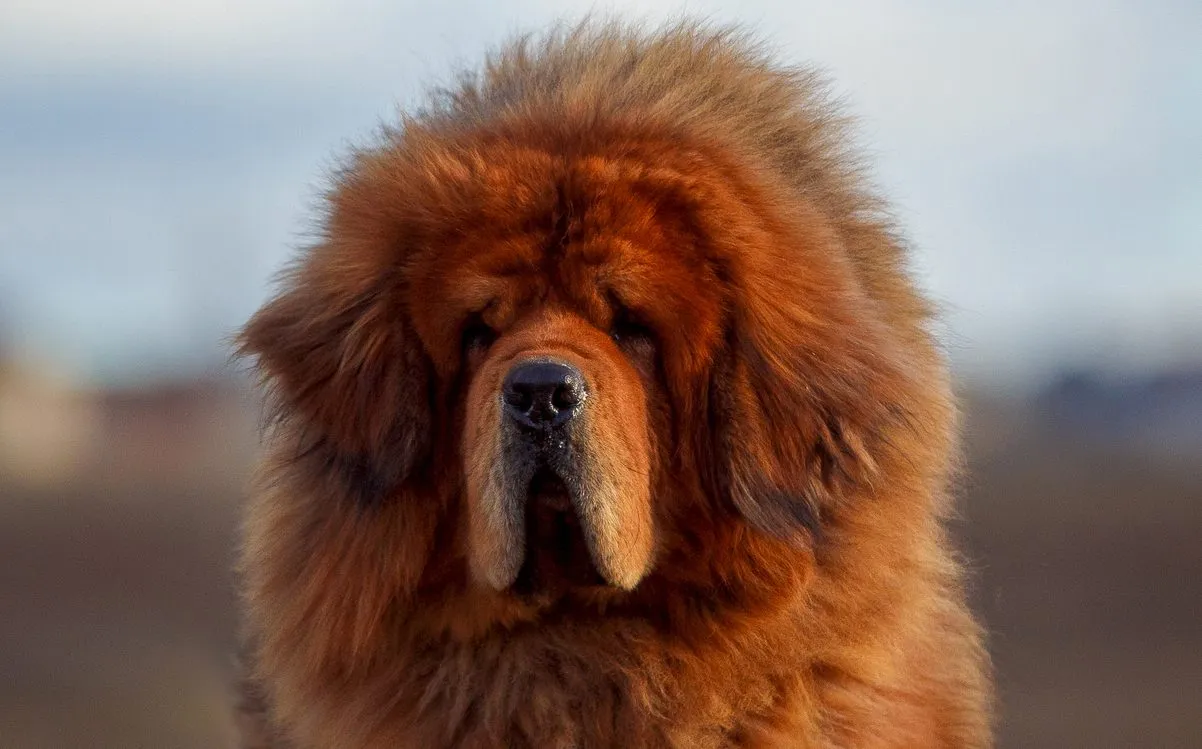
The Magnificent Mastiffs: A Closer Look at this Large Breed
Mastiffs are a remarkable breed of dogs known for their impressive size and gentle nature. With a rich history and distinct characteristics, they have captured the hearts of dog enthusiasts all over the world.
Originating from various regions, including England, Tibet, and Brazil, each type of Mastiff brings its own unique features to the table. English Mastiffs, for example, are known for their majestic appearance and calm temperament, while Bullmastiffs possess a powerful build and protective instinct. Neapolitan Mastiffs exhibit a distinct wrinkled appearance, and Tibetan Mastiffs boast a thick coat suitable for harsh climates. Brazilian Mastiffs impress with their muscular physique, and Dogue de Bordeaux captivate with their expressive faces. Lastly, the Great Dane stands out with its elegant stature and gentle nature.
While owning a Mastiff comes with its benefits, such as loyalty and companionship, it also presents challenges due to their large size and specific needs. In this article, we will explore each type of Mastiff in detail, highlighting their appearance, temperament, and unique traits. So, let's dive into the world of these magnificent Mastiffs and discover what makes them truly exceptional.
Origins and History of Mastiffs
:strip_icc()/mastiff-dog-breed-profile-1117980-cf1cdc1c2b734e4f9cf3f41e9f863b73.jpg)
Mastiffs, a magnificent breed of large dogs, have a rich and fascinating history that spans centuries. The origins of Mastiffs can be traced back to ancient times, with evidence of their existence dating back to as early as 3000 BC. These dogs were originally bred for various purposes, including guarding, hunting, and even fighting in battles.
The exact origins of Mastiffs are somewhat debated, but it is believed that they originated in Asia, specifically in regions such as Tibet and Mongolia. From there, they spread to other parts of the world through trade routes and exploration. Mastiffs played a significant role in many civilizations throughout history, including the Roman Empire, where they were used as war dogs.
Over time, different types of Mastiffs emerged, each with its own unique characteristics and traits. These breeds include the English Mastiff, Bullmastiff, Neapolitan Mastiff, Tibetan Mastiff, Brazilian Mastiff, Dogue de Bordeaux, and Great Dane. Each breed has its own distinct appearance, temperament, and purpose.
Today, Mastiffs continue to be revered for their imposing size, loyalty, and protective instincts. They make excellent family pets and are known for their gentle and loving nature. However, owning a Mastiff also comes with certain challenges, such as their large size and specific exercise needs.
In conclusion, the origins and history of Mastiffs are deeply rooted in ancient civilizations and have shaped the breed into what it is today. These magnificent dogs have left an indelible mark on human history and continue to be cherished companions for those who appreciate their unique qualities.
Characteristics and Traits of Mastiffs
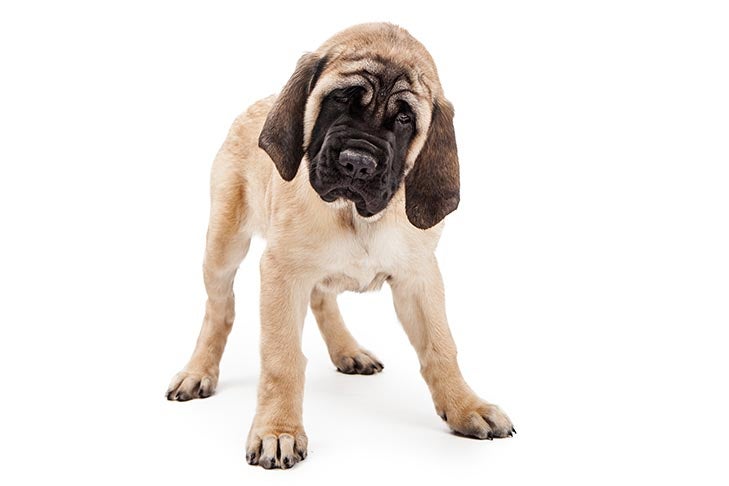
Mastiffs are known for their impressive size and strength, making them a formidable breed. They have a powerful and muscular build, with a wide chest and sturdy frame. Their large heads are often adorned with wrinkles and a strong jawline. Mastiffs have a dense and short coat that can come in a variety of colors.
In terms of temperament, Mastiffs are generally calm, gentle, and affectionate. They are known to be loyal and protective, making them excellent family pets. Despite their imposing size, Mastiffs are often described as gentle giants. They are typically good-natured and patient, making them well-suited for households with children. Mastiffs are also known to be intelligent and trainable, although they may have a stubborn streak at times.
Due to their size, Mastiffs require ample space to move around comfortably. Regular exercise is important to keep them physically and mentally stimulated. However, it's worth noting that Mastiffs are not overly energetic dogs and tend to have a more laid-back nature.
Overall, Mastiffs are majestic and noble creatures with a calm and gentle disposition. Their size and protective instincts make them excellent companions and guardians for those who appreciate their unique qualities.
English Mastiff

The English Mastiff is a magnificent breed known for its impressive size and gentle demeanor. This breed originated in England and has a rich history dating back to ancient times.
When it comes to appearance, the English Mastiff is a massive dog with a powerful build. They have a broad head, deep-set eyes, and a wrinkled forehead that adds to their unique charm. These dogs have a short coat that comes in various shades, including fawn, brindle, and apricot.
Temperament-wise, the English Mastiff is known for its calm and affectionate nature. They are incredibly gentle and patient, making them excellent companions for families with children. Despite their size, they are generally docile and friendly, although they can be protective of their loved ones when the need arises.
Training an English Mastiff requires patience and consistency due to their stubborn streak. Early socialization and obedience training are crucial to ensure they grow up to be well-behaved and obedient dogs.
In conclusion, the English Mastiff is a remarkable breed that combines size and gentleness. Their imposing presence and loving nature make them a wonderful addition to any family willing to provide them with the proper care and attention they need.
English Mastiff Appearance and Size

The English Mastiff is a breed known for its impressive size and majestic appearance. These dogs are truly a sight to behold, with a massive build and a powerful presence.
English Mastiffs are one of the largest dog breeds in the world, with males standing at least 30 inches tall at the shoulder and weighing between 160-230 pounds. Females are slightly smaller, but still substantial in size, standing around 27.5 inches tall and weighing between 120-170 pounds.
Their body is strong and muscular, with a broad chest and a sturdy frame. They have a large, square-shaped head with a short muzzle and a wrinkled forehead. Their expressive eyes are dark and set wide apart, giving them a gentle and soulful look.
The English Mastiff's coat is short and dense, providing them with protection in various weather conditions. They come in a variety of colors, including fawn, apricot, and brindle.
In summary, the English Mastiff is a truly magnificent breed with an imposing size and a regal appearance. Their impressive stature and striking features make them a breed that is hard to miss.
English Mastiff Temperament and Personality
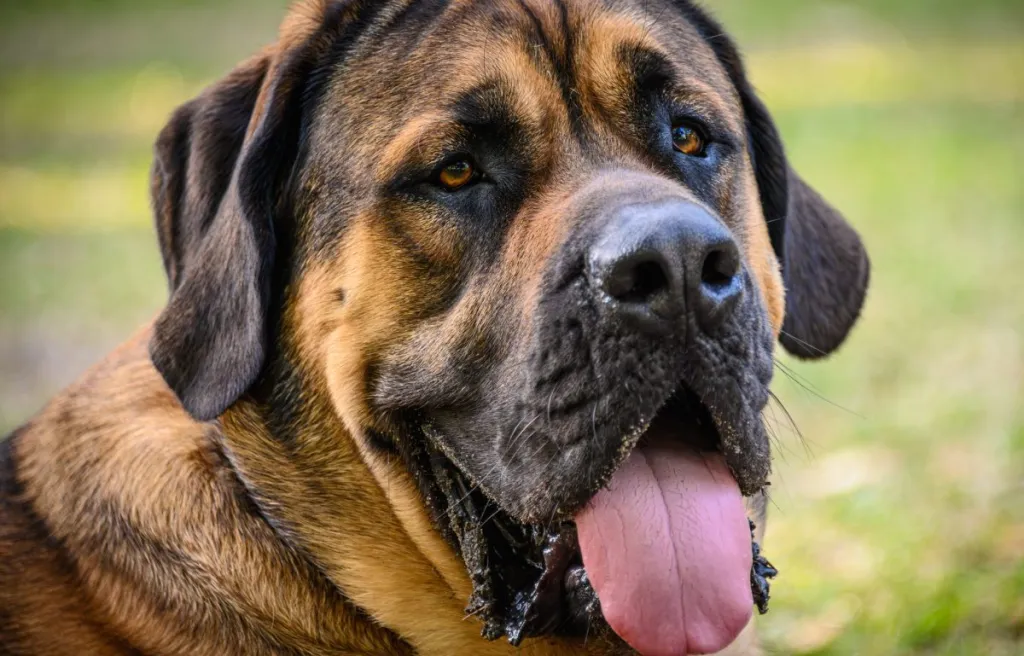
The English Mastiff is known for its calm and gentle temperament, making it an excellent choice for families and individuals seeking a loyal companion. This breed is often described as dignified and docile, with a natural instinct to protect its loved ones.
English Mastiffs are typically friendly and patient, making them great companions for children and other pets. They have a strong sense of loyalty and are deeply devoted to their families. Despite their large size, they are generally well-mannered and easygoing.
While the English Mastiff is known for its gentle nature, it can also be protective when necessary. They have a strong instinct to guard their home and loved ones, which makes them excellent watchdogs. However, they are not aggressive by nature and will only become protective if they sense a threat.
In terms of personality, English Mastiffs are often described as affectionate, loving, and calm. They thrive on human companionship and enjoy being part of the family. They are known to be good-natured and patient, making them a joy to be around.
Overall, the English Mastiff's temperament and personality make it an ideal choice for those seeking a gentle and loyal companion. With proper training and socialization, these magnificent dogs can bring years of love and companionship to their owners.
Bullmastiff
:max_bytes(150000):strip_icc()/bullmastiff-red-deck-945882046-2000-ee1203ac0d104a8981f01da58a38fb33.jpg)
The Bullmastiff is a powerful and protective breed that originated in England. Known for its size and strength, the Bullmastiff was originally bred to guard estates and catch poachers. Today, it is valued as a loyal and devoted companion.
In terms of appearance, the Bullmastiff is a large breed with a muscular build. They have a broad head, deep-set eyes, and a short muzzle. Their coat is short and dense, coming in various shades of fawn, red, or brindle.
Temperament-wise, the Bullmastiff is calm, courageous, and affectionate. They are known for being great with children and are generally good-natured. However, they can be wary of strangers and are naturally protective of their family and territory.
Training a Bullmastiff requires firmness and consistency. They are intelligent but can be stubborn at times. Early socialization is essential to ensure they develop into well-rounded dogs.
Overall, the Bullmastiff is a wonderful breed for experienced owners who can provide the necessary exercise, training, and attention. Their protective instincts and gentle nature make them an excellent choice for families looking for a loyal and devoted companion.
Bullmastiff Appearance and Size
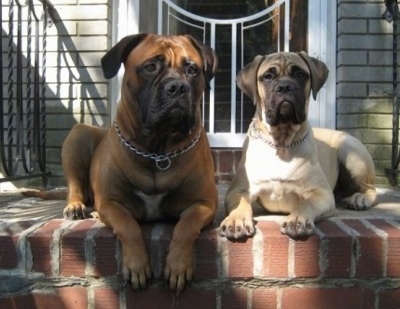
The Bullmastiff is a large and powerful breed with a distinctive appearance. They have a solid and muscular build, giving them a strong and imposing presence. Adult male Bullmastiffs typically stand between 25 to 27 inches at the shoulder, while females are slightly smaller, measuring around 24 to 26 inches. In terms of weight, males can range from 110 to 130 pounds, and females generally weigh between 100 to 120 pounds.
One of the most notable features of the Bullmastiff is its head. They have a broad and square-shaped skull, with a well-defined stop. Their deep-set dark eyes exude an alert and intelligent expression, adding to their overall formidable appearance. The Bullmastiff has a short and dense coat that comes in various shades, including fawn, red, or brindle.
In addition to their size, the Bullmastiff's appearance showcases their strength and athleticism. Their body is well-proportioned, with a wide chest and strong, straight legs. Their tail is set high and carried straight or curved slightly upwards. Overall, the Bullmastiff's appearance reflects their role as a powerful and capable guardian breed.
When it comes to appearance, the Bullmastiff is undeniably impressive and commands attention wherever they go.
Bullmastiff Temperament and Training
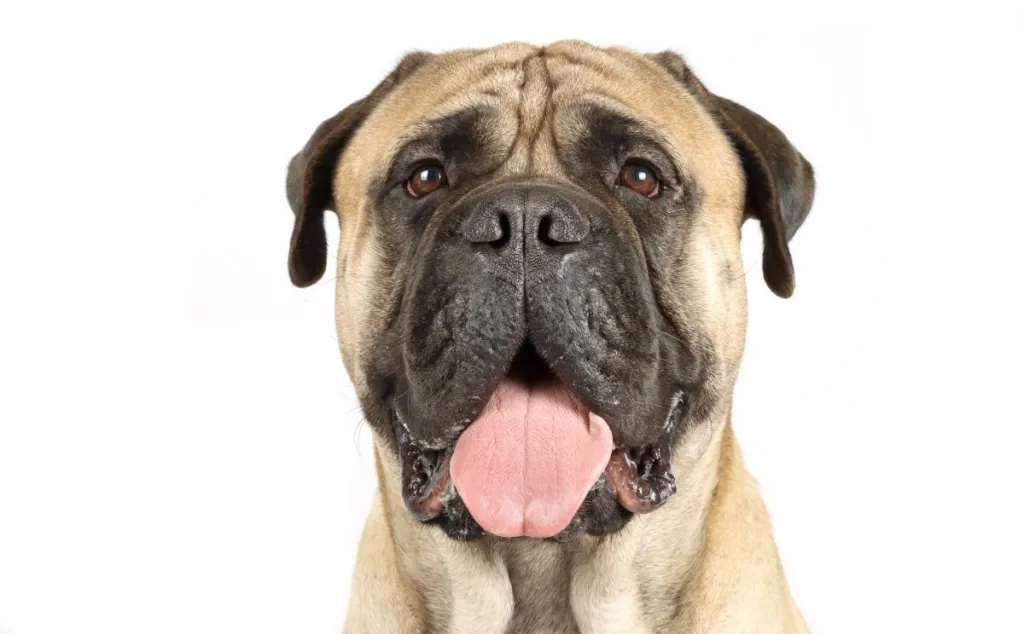
The Bullmastiff is known for its calm and gentle temperament, making it an ideal companion for families. They are loyal, protective, and highly devoted to their owners. Despite their large size, Bullmastiffs are generally good-natured and patient, especially with children. Their calm demeanor makes them excellent therapy dogs and they are often used in roles such as search and rescue or as service animals.
When it comes to training, Bullmastiffs are intelligent and eager to please. However, they can also be stubborn at times, so consistency and firmness are key. Early socialization is crucial to ensure that they grow up to be well-rounded and well-behaved dogs. Exposing them to different people, animals, and environments will help them develop into confident and friendly companions.
Due to their protective nature, Bullmastiffs require proper training and guidance to ensure they do not become overly aggressive or dominant. Positive reinforcement methods, such as rewards and praise, work best with this breed. Harsh training methods or punishment can lead to fear or aggression. It's important to establish yourself as the pack leader while maintaining a loving and respectful relationship with your Bullmastiff.
Overall, Bullmastiffs are loyal, gentle, and protective dogs that make wonderful family pets when properly trained and socialized. With the right approach, they can become well-mannered and obedient companions for years to come.
Neapolitan Mastiff
The Neapolitan Mastiff is a majestic and powerful breed that originated in Italy. Known for its massive size and distinctive appearance, the Neapolitan Mastiff is a true marvel of nature. This breed has a large, heavyset body with loose skin and deep wrinkles, giving it a unique and wrinkled appearance. The Neapolitan Mastiff is also recognized for its large head, wide muzzle, and expressive eyes.
In terms of temperament, the Neapolitan Mastiff is known to be loyal, protective, and affectionate towards its family. Despite its intimidating size, this breed is gentle and loving with its loved ones. Neapolitan Mastiffs are highly intelligent and trainable, making them excellent guard dogs and companions.
When it comes to health, Neapolitan Mastiffs are prone to certain conditions, such as hip dysplasia, bloat, and skin infections due to their excessive skin folds. Regular exercise and a balanced diet are crucial to maintaining their overall well-being.
If you're considering adding a Neapolitan Mastiff to your family, it's important to note that they require a dedicated owner who can provide proper training, socialization, and ample space for their large size. With the right care and attention, the Neapolitan Mastiff can be a loyal and loving companion for life.
Neapolitan Mastiff Appearance and Features

The Neapolitan Mastiff is a breed known for its distinctive appearance and unique features. With its large size and muscular build, this breed commands attention wherever it goes.
The Neapolitan Mastiff has a massive head with loose skin that forms wrinkles and folds, giving it a distinctively wrinkled appearance. Their deep-set, expressive eyes are set wide apart and convey a sense of intelligence and alertness. Their ears are medium-sized and hang down, adding to their overall majestic look.
One of the most recognizable features of the Neapolitan Mastiff is its loose, thick skin that covers its body. This loose skin forms folds and wrinkles, particularly around the neck and face. The breed's thick and dense coat is short and can come in various colors, including gray, black, mahogany, and tawny.
In terms of size, the Neapolitan Mastiff is a large and powerful breed. Males typically stand between 26 to 31 inches at the shoulder and can weigh anywhere from 150 to 200 pounds. Females are slightly smaller, standing between 24 to 29 inches and weighing around 110 to 150 pounds.
Overall, the Neapolitan Mastiff's impressive appearance and unique features make it a breed that stands out in a crowd. Its combination of size, wrinkles, and muscular build make it a truly magnificent breed.
Neapolitan Mastiff Temperament and Health

The Neapolitan Mastiff is known for its distinctive appearance, but it also possesses unique temperament traits and health considerations. This large breed is renowned for its loyalty and protective nature. Neapolitan Mastiffs are typically calm and gentle with their family members, but they can be wary around strangers. They have a strong instinct to guard and protect their loved ones, making them excellent watchdogs.
In terms of health, Neapolitan Mastiffs are prone to certain conditions. Their large size puts them at risk for joint issues, such as hip and elbow dysplasia. They may also experience bloat, a potentially life-threatening condition that requires immediate veterinary attention. Regular exercise and a balanced diet are crucial to maintaining their overall well-being.
Neapolitan Mastiffs require consistent socialization and early training to ensure they grow into well-rounded adults. They thrive in homes where they receive ample love and attention from their owners. Potential owners should be prepared for the commitment and responsibilities that come with owning this majestic breed.
Overall, the Neapolitan Mastiff's temperament and health considerations make it a unique and rewarding breed for experienced dog owners who can provide the necessary care and training.
Tibetan Mastiff
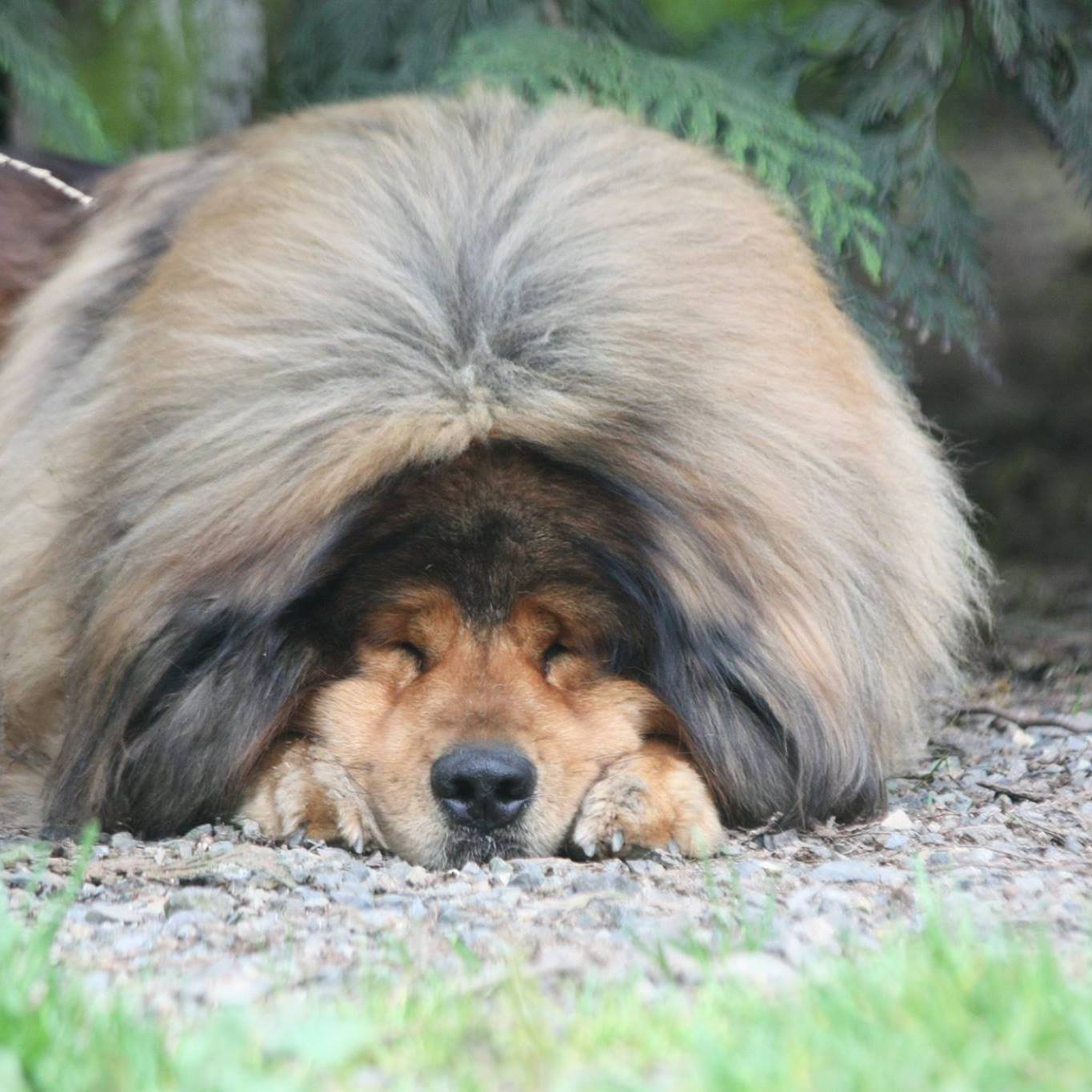
Tibetan Mastiffs are an ancient and majestic breed with a rich history. These dogs are known for their imposing appearance and thick, luxurious coats. They have a large, muscular build and can weigh up to 150 pounds. Their distinctive feature is their lion-like mane that surrounds their face and neck.
In terms of temperament, Tibetan Mastiffs are known for being independent and protective. They are loyal and devoted to their families, but can also be quite aloof with strangers. This breed requires strong leadership and consistent training to ensure they become well-behaved and obedient companions.
Tibetan Mastiffs have moderate exercise needs and enjoy daily walks and playtime. However, they are not overly active dogs and are content with a moderate amount of physical activity. Their thick coats require regular grooming to prevent matting and keep them looking their best.
While Tibetan Mastiffs make excellent guard dogs, they are not recommended for first-time dog owners or families with young children. Their protective instincts and independent nature require experienced handlers who can provide proper training and socialization.
In conclusion, Tibetan Mastiffs are a magnificent breed with a striking appearance and unique personality. They are best suited for experienced owners who can meet their needs for training, exercise, and grooming. With the right care and attention, Tibetan Mastiffs can be loyal and loving companions for those who appreciate their regal presence.
Tibetan Mastiff Appearance and Coat
The Tibetan Mastiff is a majestic and imposing breed known for its distinctive appearance and luxurious coat. These dogs have a large and muscular build, with a strong bone structure and well-developed limbs. They exude strength and power while maintaining an elegant and noble stance.
One of the most eye-catching features of the Tibetan Mastiff is its dense and weather-resistant double coat. The outer coat is long, thick, and coarse, providing protection against harsh elements. Meanwhile, the undercoat is soft and insulating, keeping the dog warm in colder climates. The coat comes in various colors, including black, brown, gray, and gold, often with stunning markings.
Grooming a Tibetan Mastiff requires dedication and regular maintenance. Their dense coat requires brushing at least once or twice a week to prevent matting and remove loose hair. During shedding seasons, which occur twice a year, more frequent brushing is necessary to keep their coat healthy and tidy.
To maintain the natural beauty of their coat, it is recommended to avoid excessive bathing as it may strip the coat of its natural oils. However, regular hygiene practices such as ear cleaning and nail trimming should still be implemented.
Overall, the Tibetan Mastiff's appearance and coat contribute to its regal and majestic aura, making it a truly awe-inspiring breed.
Tibetan Mastiff Temperament and Exercise Needs

The Tibetan Mastiff is known for its strong and independent temperament. This breed is often described as aloof and reserved, making them excellent guard dogs. They are naturally protective of their family and territory, and they have a keen sense of loyalty. While they are generally calm and gentle with their loved ones, they can be wary of strangers and may show aggression if they feel threatened.
In terms of exercise needs, the Tibetan Mastiff requires regular physical activity to keep them healthy and mentally stimulated. However, it's important to note that they are not an overly active breed. They have a moderate energy level and are content with daily walks and playtime in a secure, fenced area. Although they are large dogs, they do not require extensive exercise or excessive running.
Owners should also provide mental stimulation for their Tibetan Mastiffs through training sessions and interactive toys. This will help prevent boredom and destructive behavior. Additionally, early socialization is crucial for this breed to ensure they grow up to be well-rounded and confident adults.
Overall, the Tibetan Mastiff's temperament and exercise needs make them a great choice for experienced dog owners who are willing to provide the necessary training and socialization. They thrive in a calm and structured environment where their protective instincts can be channeled appropriately.
Brazilian Mastiff
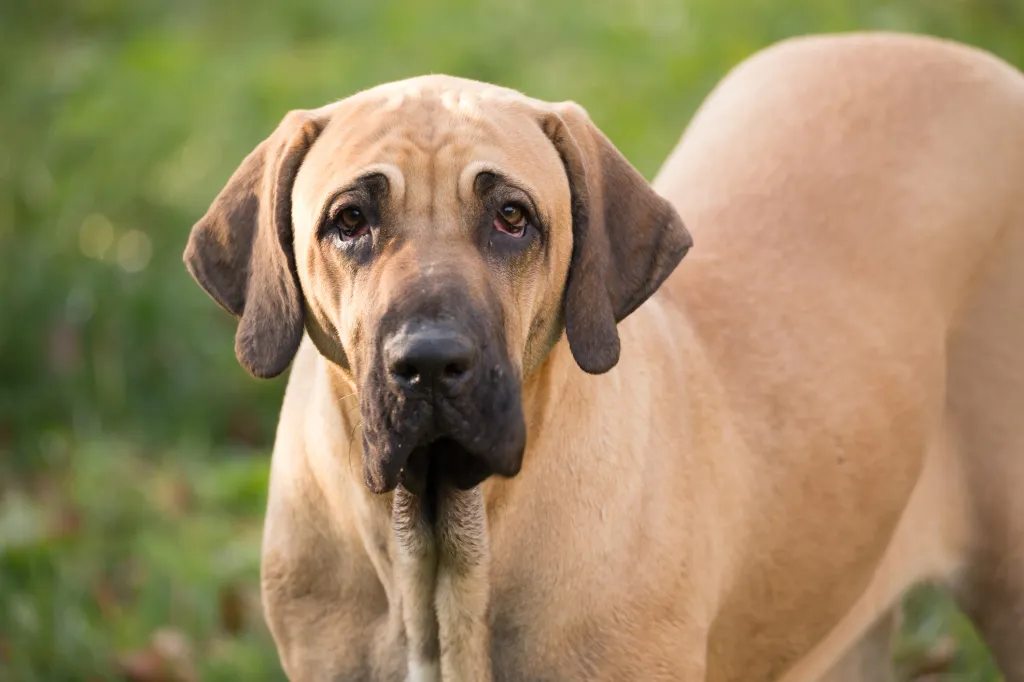
Brazilian Mastiffs, also known as Fila Brasileiro, are a large and powerful breed that originated in Brazil. They were originally bred to work on farms as guard dogs and were used to hunt large game such as jaguars and boars.
When it comes to appearance, Brazilian Mastiffs are muscular and well-built. They have a short coat that comes in various colors, including brindle, fawn, and black. Their heads are large and strong, with a pronounced stop and a powerful jaw.
In terms of temperament, Brazilian Mastiffs are known for their protective instincts. They are loyal and devoted to their families, making them excellent guard dogs. However, they can also be stubborn and independent, requiring a firm and consistent hand in training.
Due to their size and strength, Brazilian Mastiffs require regular exercise to keep them physically and mentally stimulated. They thrive in homes with large yards where they can run and play. Early socialization is also crucial to ensure they develop into well-rounded dogs.
In conclusion, Brazilian Mastiffs are impressive and formidable dogs. Their protective nature and muscular build make them an excellent choice for experienced dog owners who are looking for a loyal and powerful companion.
Brazilian Mastiff Appearance and Muscular Build
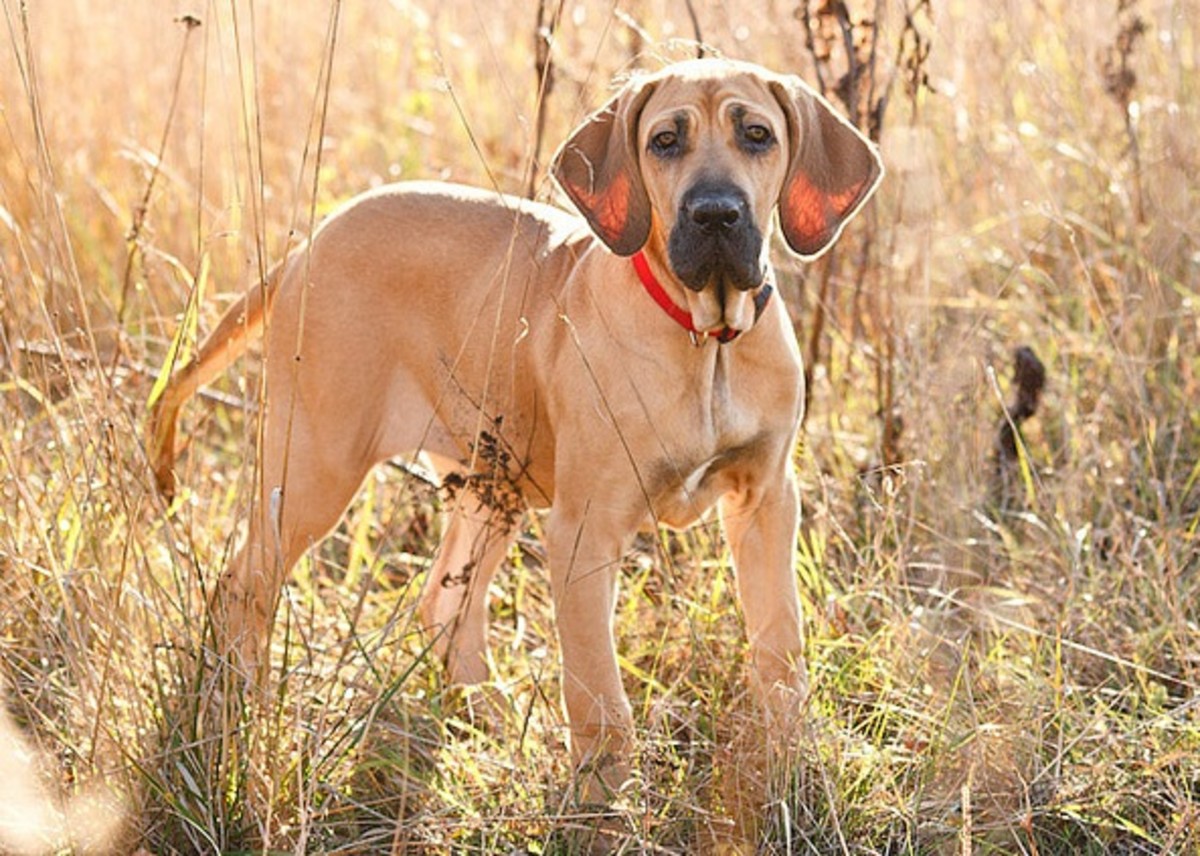
The Brazilian Mastiff, also known as the Fila Brasileiro, is a large and powerful breed with a distinctive appearance and muscular build. These dogs have a strong and robust body structure, which is a testament to their working heritage.
The Brazilian Mastiff is a massive dog, typically weighing between 90 and 110 pounds for females and 110 to 130 pounds for males. They have a rectangular-shaped body with a broad chest and well-muscled limbs. Their head is large and square-shaped, with a powerful jaw and a prominent forehead.
The breed's muscular build is essential for their original purpose as a working dog. Brazilian Mastiffs were traditionally used for herding, guarding, and tracking, requiring strength and agility. Their powerful muscles enable them to perform tasks such as pulling heavy loads and tackling challenging terrain.
In addition to their muscular physique, Brazilian Mastiffs have a short and dense coat that comes in various colors, including fawn, brindle, and black. Their muscular build, combined with their imposing size and protective instincts, makes them an excellent choice for individuals seeking a loyal and formidable companion.
When considering a Brazilian Mastiff, potential owners should be aware of their exercise needs and the importance of providing them with regular physical activity to maintain their muscular build. These dogs thrive on mental and physical stimulation, so engaging them in activities such as obedience training, agility exercises, and playtime is crucial to their overall well-being.
Brazilian Mastiff Temperament and Protective Instincts
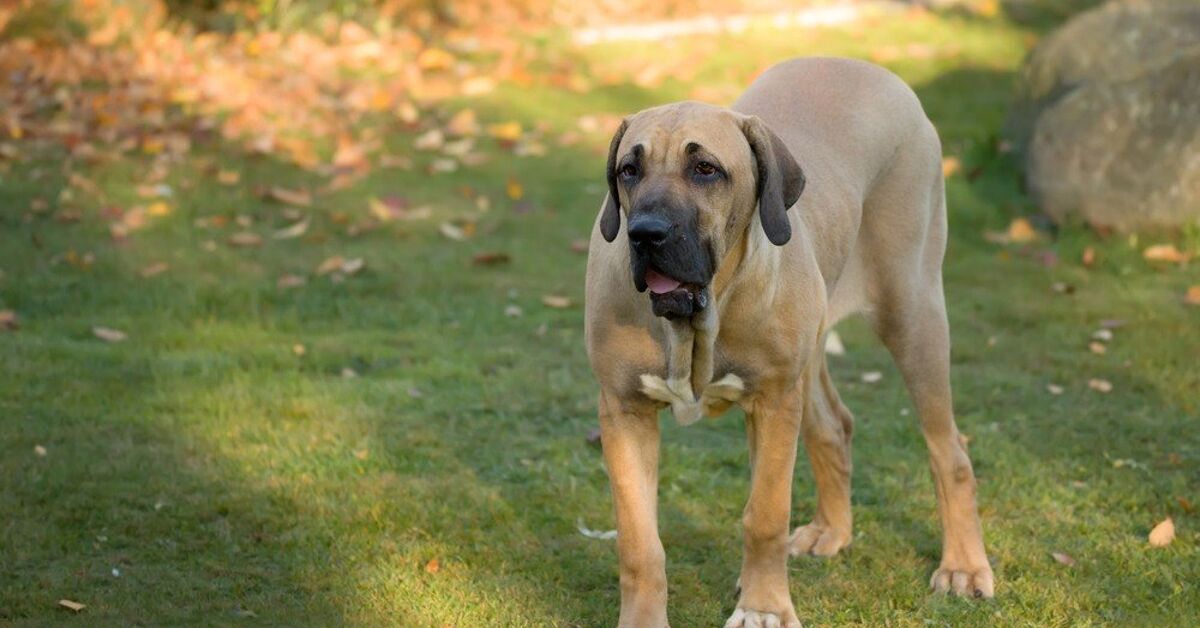
The Brazilian Mastiff, also known as the Fila Brasileiro, is renowned for its impressive temperament and protective instincts. This large breed is deeply loyal to its family, making it an excellent guard dog. With its strong protective instincts, the Brazilian Mastiff is always alert and vigilant, ready to defend its loved ones if the need arises.
The temperament of a Brazilian Mastiff is typically calm and docile, but it can quickly switch to being assertive and protective when it senses a threat. This breed is known for its unwavering loyalty and will go to great lengths to protect its family members. Their size and strength make them an intimidating presence, deterring potential intruders.
When properly trained and socialized, Brazilian Mastiffs can be gentle and affectionate with their families. However, due to their protective nature, they may not be suitable for households with young children or other pets. It's crucial for owners to establish themselves as strong leaders to ensure that the Brazilian Mastiffs' protective instincts are channeled appropriately.
Also, try to provide adequate mental and physical stimulation for this breed as they thrive on being given tasks to do and need regular exercise to maintain their well-being. With the right training, socialization, and care, the Brazilian Mastiff can be a loving and devoted companion while also providing security and protection to its family.
Dogue de Bordeaux
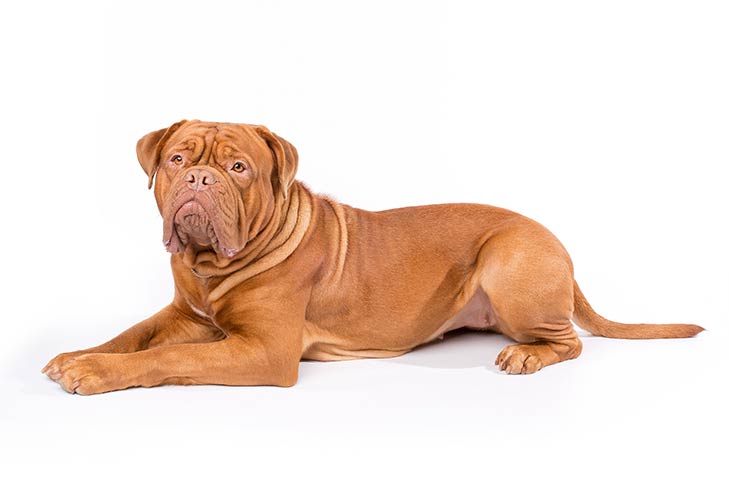
The Dogue de Bordeaux, also known as the Bordeaux Mastiff or French Mastiff, is a powerful and muscular breed that originated in France. This majestic dog is instantly recognizable by its large head, expressive eyes, and wrinkled face. The Dogue de Bordeaux is a large breed, with males typically weighing between 110 to 145 pounds and females weighing between 99 to 120 pounds.
In terms of temperament, the Dogue de Bordeaux is known for its loyalty and protective nature. They are often described as gentle giants, as they are incredibly affectionate and devoted to their families. However, their protective instincts can make them wary of strangers, which makes early socialization and training crucial for this breed.
Despite their intimidating appearance, Dogue de Bordeaux dogs are actually very good with children and can be quite gentle. They are also known for being calm and patient, making them a great choice for families with young kids. However, due to their large size, they require regular exercise to keep them physically and mentally stimulated.
Overall, owning a Dogue de Bordeaux can be a rewarding experience for the right owner. They are loyal, affectionate, and protective, making them excellent family pets. However, potential owners should be aware of the breed's size and exercise needs before bringing one into their home. With proper care and training, the Dogue de Bordeaux can be a loving and devoted companion for many years to come.
Dogue de Bordeaux Appearance and Expression

The Dogue de Bordeaux, also known as the French Mastiff, is a majestic and powerful breed with a distinctive appearance and expression. These dogs have a large and muscular build, with a broad head and a strong jawline. Their face is wrinkled, especially around the forehead, giving them a unique and expressive look.
The Dogue de Bordeaux has a massive body, with a deep chest and a sturdy frame. They have a short, dense coat that comes in various shades of fawn, ranging from a light mahogany to a rich red. Their eyes are medium-sized and dark, giving them an intense and intelligent gaze.
When it comes to their expression, Dogue de Bordeaux exude confidence and strength. Their facial wrinkles and droopy jowls give them a serious and thoughtful expression, which is contrasted by their gentle and affectionate nature. Their ears are set high and can be either cropped or left natural, adding to their overall appearance.
In conclusion, the Dogue de Bordeaux's appearance and expression truly capture their noble and regal essence. These dogs are not only visually striking but also possess a loving and loyal temperament, making them a remarkable breed to own.
Dogue de Bordeaux Temperament and Family Compatibility
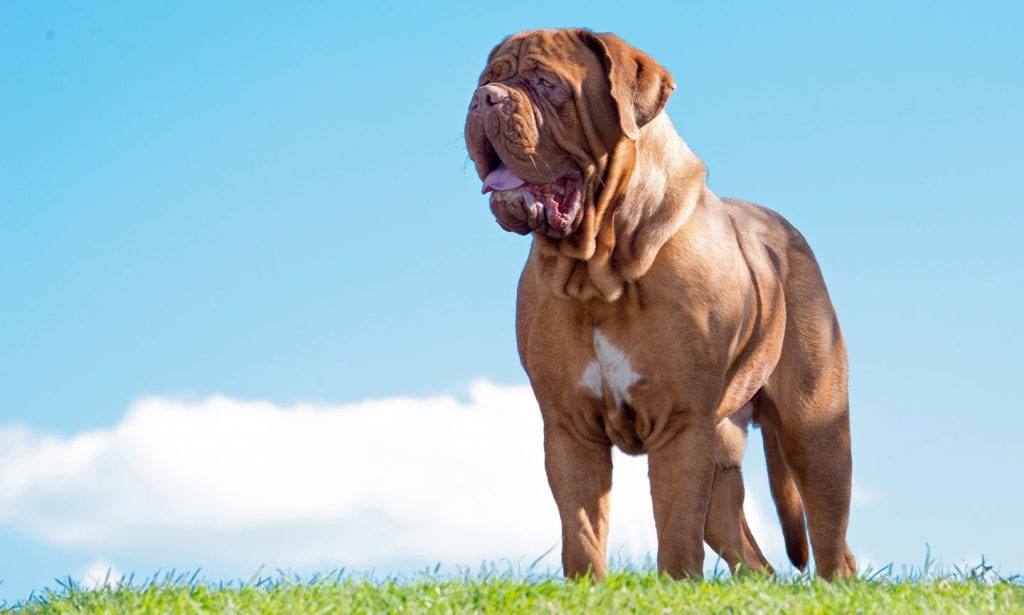
The Dogue de Bordeaux, also known as the French Mastiff, is a breed known for its calm and gentle temperament. Despite their imposing size, these dogs are incredibly loving and loyal to their families. They are known to be affectionate and devoted, making them excellent family pets.
The Dogue de Bordeaux is known for their protective instincts, which makes them great guardians of their home and loved ones. They are naturally cautious around strangers and will not hesitate to defend their family if they sense any threat. This makes them excellent watchdogs.
When it comes to family compatibility, the Dogue de Bordeaux does well with children and other pets when properly socialized from a young age. They are patient and tolerant, making them great companions for families with children. However, due to their large size, supervision is necessary to ensure the safety of both the dog and the children.
Owners of the Dogue de Bordeaux should also be aware of their exercise needs. While they are not particularly high-energy dogs, they still require daily walks and mental stimulation to keep them happy and healthy.
In conclusion, the Dogue de Bordeaux's temperament and family compatibility make them a wonderful addition to the right household. Their loyalty, protectiveness, and gentle nature make them excellent companions and guardians for families who are willing to provide the love, care, and exercise that they require.
Great Dane
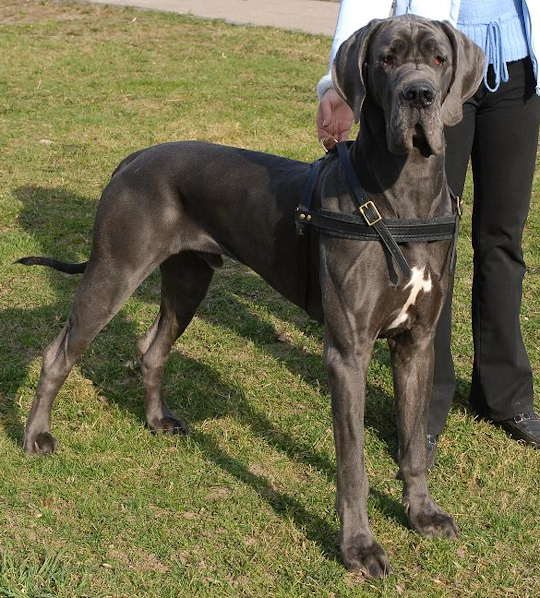
Great Dane Appearance and Gentle Nature
The Great Dane is a majestic and elegant breed known for its towering height and gentle nature. They are one of the largest dog breeds, with males standing at least 30 inches tall at the shoulder and weighing between 140 to 175 pounds. Despite their size, Great Danes are well-proportioned and have a sleek and muscular build.
Their appearance is characterized by a long and powerful neck, a deep chest, and a broad and expressive head. They have a short and dense coat that can come in various colors, including fawn, brindle, black, blue, and harlequin.
In terms of temperament, the Great Dane is often described as friendly, patient, and affectionate. They are known to be gentle giants who are great with children and can get along well with other pets. However, their size can be intimidating to some, so proper socialization and training are essential.
Due to their size, Great Danes require regular exercise to keep them physically and mentally stimulated. Daily walks and playtime in a secure area are recommended to maintain their health and prevent boredom.
Overall, the Great Dane is a wonderful companion for those who appreciate their gentle nature and majestic presence.
Great Dane Appearance and Gentle Nature
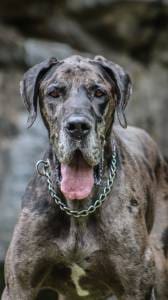
The Great Dane, also known as the "Apollo of dogs," is a majestic and imposing breed that commands attention wherever it goes. With its tall and muscular build, the Great Dane stands out as one of the largest dog breeds in the world. Males can reach up to 32 inches in height at the shoulder, while females are slightly smaller.
In terms of appearance, the Great Dane has a sleek and streamlined body, with a deep chest and a well-defined waistline. Its head is long and rectangular, with a strong jaw and expressive eyes. The ears may be cropped or left natural, adding to its regal and dignified look.
Despite its imposing size, the Great Dane is known for its gentle and friendly nature. This breed is often described as a "gentle giant" due to its calm and patient temperament. Great Danes are typically affectionate and loyal towards their families, making them excellent companions and family pets. They are known for their tolerance towards children and other animals, although early socialization is important for them to develop proper behavior around others.
While the Great Dane's size may be intimidating to some, its gentle nature and friendly disposition make it a beloved breed among dog enthusiasts. Whether as a loyal family pet or a show-stopping presence in the show ring, the Great Dane's combination of size and gentle nature makes it truly remarkable.
Great Dane Temperament and Socialization
:strip_icc()/great-dane-129741288-resized-56a26a905f9b58b7d0c9fe74.jpg)
Great Danes are known for their gentle and affectionate nature. They are often referred to as the "gentle giants" due to their calm and friendly demeanor. Great Danes are typically good-natured and get along well with children and other pets. They are known to be patient and tolerant, making them excellent family pets.
Socialization plays a crucial role in shaping a Great Dane's temperament. It is important to expose them to different people, animals, and environments from a young age to ensure they grow up to be well-rounded and confident dogs. Early socialization helps prevent fear or aggression towards strangers or unfamiliar situations.
Great Danes thrive on human companionship and enjoy being part of the family. They are loyal and protective, which makes them excellent watchdogs. Despite their large size, they are generally not aggressive unless provoked. However, it is still important to provide proper training and guidance to ensure they understand appropriate behavior.
Overall, Great Danes have a loving and gentle temperament that makes them great companions for families. With proper socialization and training, they can be well-behaved and friendly dogs who bring joy and happiness to their owners' lives.
Conclusion
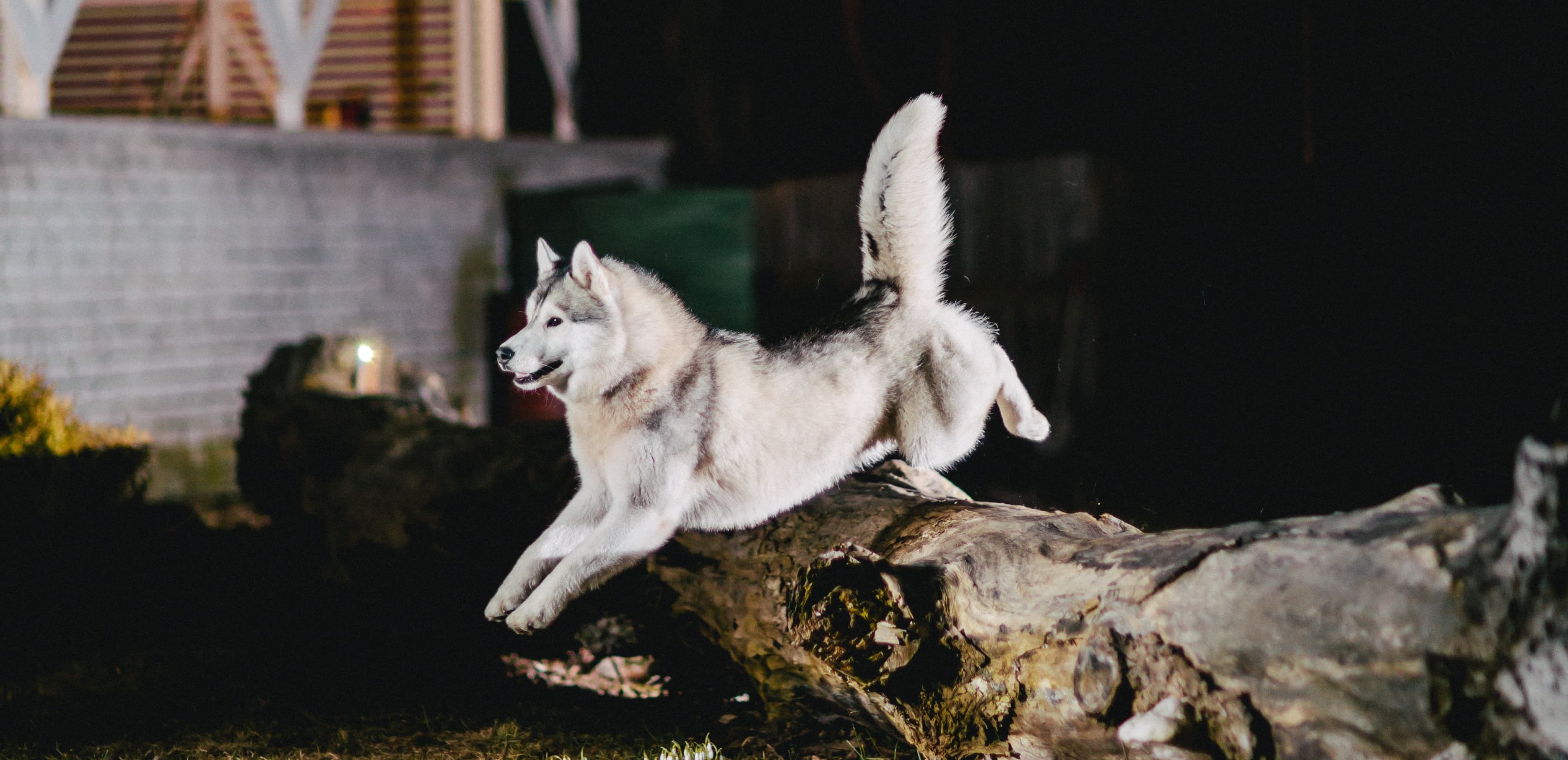
In conclusion, the magnificent mastiffs are a breed of dogs that have a rich history and unique set of characteristics. Whether it's the English Mastiff, Bullmastiff, Neapolitan Mastiff, Tibetan Mastiff, Brazilian Mastiff, Dogue de Bordeaux, or Great Dane, each mastiff breed offers its own distinct features and temperaments.
Owning a mastiff comes with its benefits and challenges. These gentle giants are known for their loyalty, protective instincts, and affectionate nature towards their families. They can be great companions and provide a sense of security. However, their large size and strength require responsible ownership, proper training, and socialization.
If you're considering adding a mastiff to your family, it's important to do thorough research and understand the specific needs of the breed. This includes providing ample space, regular exercise, and proper nutrition. It's also essential to address any potential health issues that may arise with the breed.
Overall, mastiffs are truly magnificent dogs that bring joy, love, and protection to their owners. With the right care and attention, these gentle giants can make wonderful additions to any family.
Benefits and Challenges of Owning a Mastiff

Owning a Mastiff comes with its own set of benefits and challenges. One of the main advantages of having a Mastiff as a companion is their loyal and protective nature. Mastiffs are known for being incredibly devoted to their families and will go to great lengths to keep them safe. Their large size and intimidating presence can be a deterrent to potential intruders, making them excellent guard dogs.
Another benefit of owning a Mastiff is their gentle and loving nature towards their family members. Despite their imposing appearance, Mastiffs are typically gentle giants who are great with children and other pets. They have a calm and patient demeanor, making them ideal for households with young kids.
However, it's important to consider the challenges that come with owning a Mastiff. Their large size means they require ample space to move around and exercise. Mastiffs also tend to drool and shed quite a bit, so regular grooming and cleaning are necessary. Additionally, their size and weight can make them prone to certain health issues, such as hip dysplasia and bloat.
In conclusion, owning a Mastiff can bring immense joy and companionship, but it also requires dedication and responsibility. Potential owners should carefully consider their lifestyle and ability to meet the needs of this wonderful breed. With the right care and attention, a Mastiff can be a loving and loyal member of the family.
Final Thoughts and Recommendations
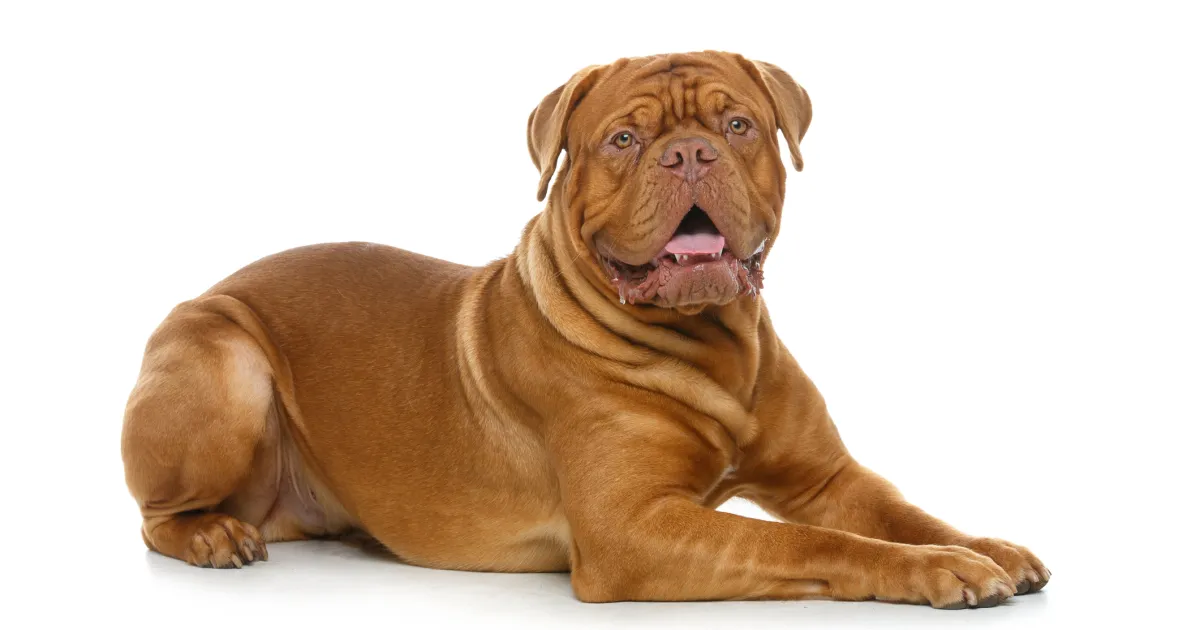
Final Thoughts and Recommendations
In conclusion, owning a Mastiff can be a rewarding experience for the right individual or family. These magnificent dogs bring a unique combination of size, strength, and loyalty that make them stand out among other breeds. However, it is important to consider the benefits and challenges that come with owning a Mastiff.
Mastiffs require ample space and regular exercise to maintain their physical and mental well-being. They also have specific grooming needs, especially those with longer coats like the Neapolitan and Tibetan Mastiffs. Potential owners should be prepared for the financial commitment that comes with providing proper healthcare, nutrition, and training for these large breeds.
Furthermore, it is essential to remember that Mastiffs have a protective instinct and may not always be suitable for every household. Early socialization and consistent training are crucial to help them become well-rounded and obedient companions.
For those who are willing to invest the time, effort, and resources into caring for a Mastiff, the rewards are immeasurable. These gentle giants can provide unwavering loyalty, companionship, and a sense of security like no other breed. So, if you are up for the challenge and ready to embrace the magnificence of a Mastiff, they may just be the perfect addition to your family.




0 Comments